Tahoe Rim 50 mile run
| July 18, 2017 | Posted by Melinda under Event Report, Ultra Running |
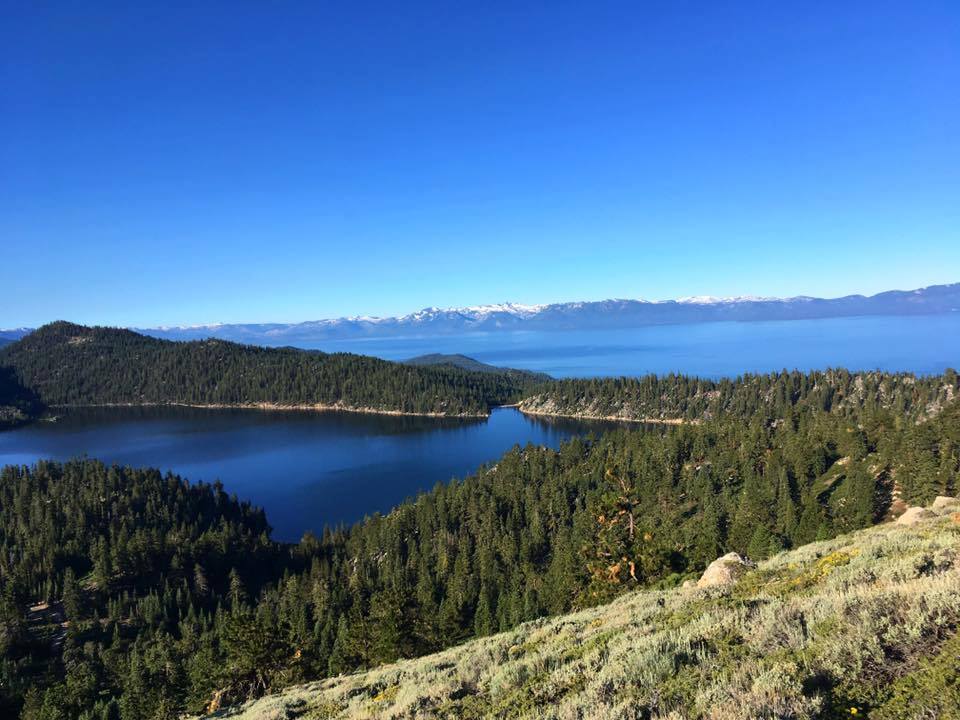 Three weeks ago I got an email letting me know that after MONTHS of being #14 on the wait list, I had a spot in the Tahoe 50 mile trail run if I wanted it. HELLZ YES!!!!!!!
Three weeks ago I got an email letting me know that after MONTHS of being #14 on the wait list, I had a spot in the Tahoe 50 mile trail run if I wanted it. HELLZ YES!!!!!!! 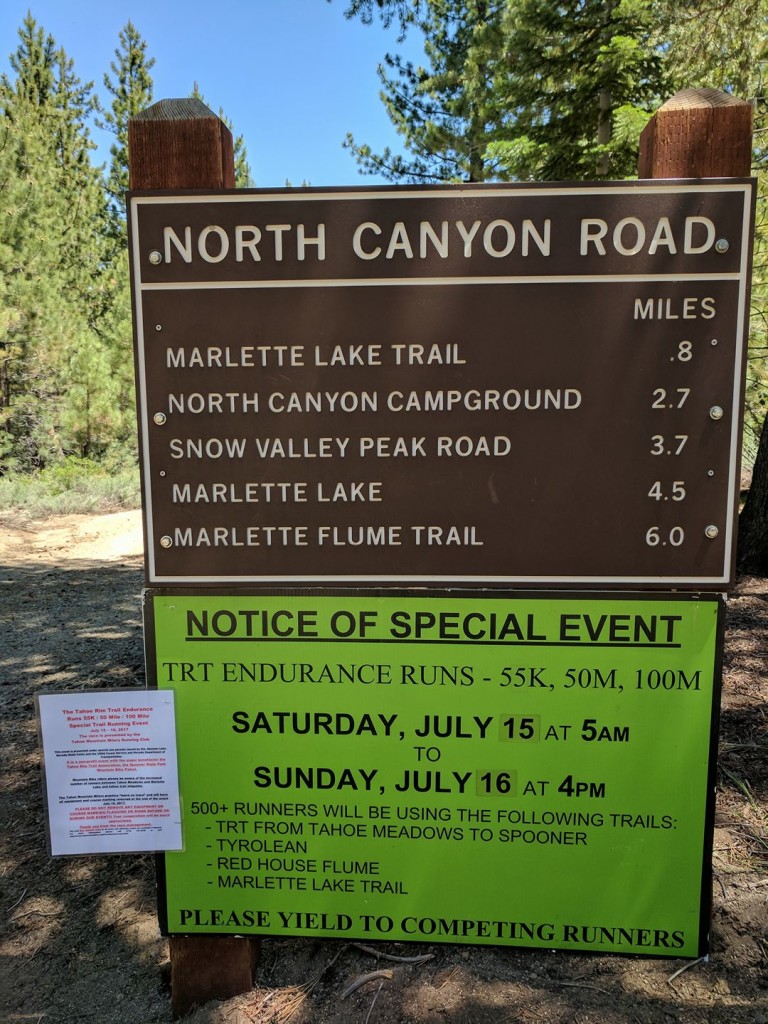 Because getting into a bucket race 3 weeks prior gives me plenty of time to
Because getting into a bucket race 3 weeks prior gives me plenty of time to train, acclimate to the elevation, do course research, take time off work…. Ummm…I mean do one long run (pacing WS100), start my taper (and a new job), and start begging favors from friends. Ummm…hi Cyd. Below is a picture that race management just posted about them marking trail for the run. Can I borrow your poles? 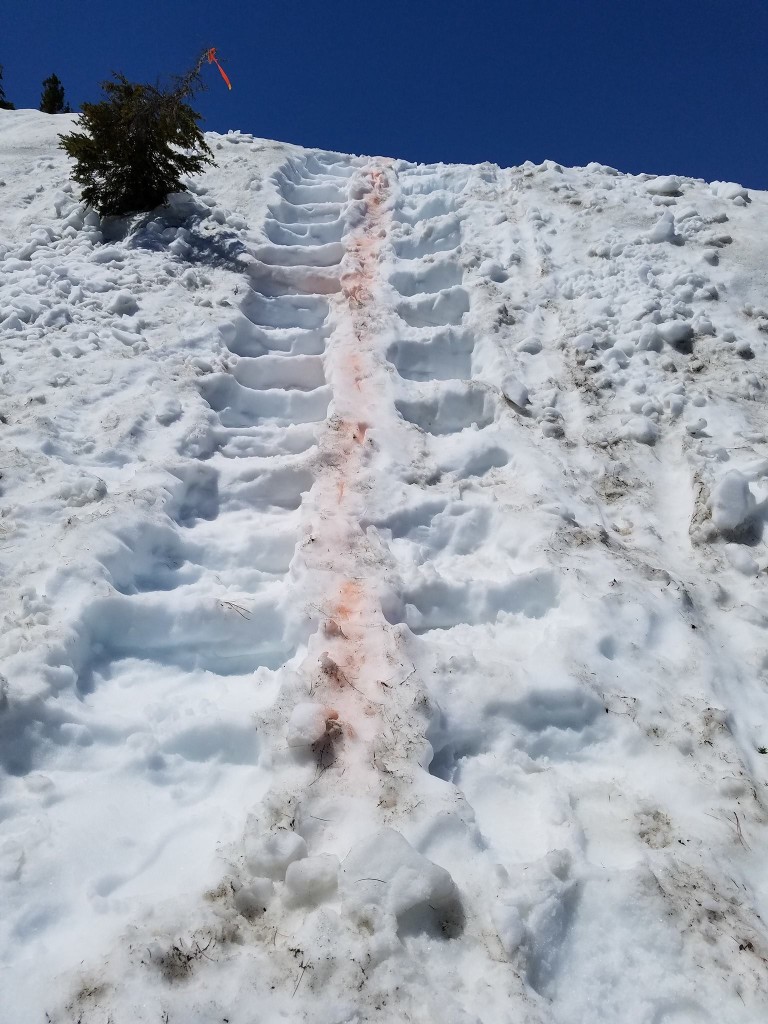 Oh hi endurance rider who is local to the race whom I met a month ago that I know is running the 55k at the race….so I got in. Lodging suggestions? Oh, your spare room? That would be *great*. Against all logic, this was perhaps my best executed 50 mile race ever. Maybe my best ultra so far. This, despite minimal training, elevation far beyond what I thought my capacity was, and never having been on the trail before.
Oh hi endurance rider who is local to the race whom I met a month ago that I know is running the 55k at the race….so I got in. Lodging suggestions? Oh, your spare room? That would be *great*. Against all logic, this was perhaps my best executed 50 mile race ever. Maybe my best ultra so far. This, despite minimal training, elevation far beyond what I thought my capacity was, and never having been on the trail before.

Look carefully at the left hand bar. Yes, that really is *9,000 ft* of elevation that the map is flirting with multiple times. I live at sea level.
I’m starting to notice a trend. Races that push me out of my comfort zone and scare me because I *know* I’m undertrained are my most wild successes. Why? I’m think it’s because when I show up to a race humble, ready to suffer but committed to seeing it through to the end – then I don’t take stupid shortcuts. I take care of myself, pay attention to the small details, and pace myself really carefully. Miraculously (or not….) it turns out this is the secret to a really good race. Maybe there’s something to be learned here. Note to self: Start the race very afraid. To up the fear factor, pick a hill in the second half of the race that you are really afraid of and then save yourself for that hill.
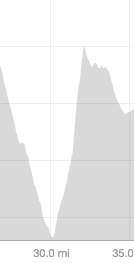
Having a 1500′ climb in under 2 miles in the afternoon on exposed hill side does make for cautious running in the first half! (and a huge confidence booster when you get to the top feeling good).
This is not an event where one *PRs, so I thought it was reasonable to assume I was probably capable of finishing around 15 hours which is about an hour longer than any other 50 miler I’ve run. But, I was so unsure how I would handle the conditions, I didn’t even bother putting that pace on my pace chart. Instead, I used 16.5 hours – the absolute maximum amount of time they allowed for finishing the race. *(PR = personal record, which is the fastest time you have run for a particular distance) My stated goals were: Feel good enough to enjoy every single one of the highly-lauded aid stations throughout the race and finish before cut offs. And so that’s what I did. I mosey’ed along, happily noting that I was “beating” the expected time in each section compared to a 16.5 hour finish, looking at the scenery, encouraging fellow runners who were having a tough day, and enjoying the aid stations (“Can I have two of those smoothies? And stuff a bunch of your sandwiches into my ziplock for the trail?”). I kept my mental workload as low as possible and my physical effort matched to what was reasonable for where I was in the race – effortless and respectful in the beginning, harder near the end. I didn’t stress when I was in the congo line of runners doing 16 min miles for the first couple miles of the race.

This picture and the first picture of this post courtesy of Courtney, who ran the 55k (and finished!), who was also my lovely host for the race.
When my brain tried to have an anxiety attack at 1pm because I was at a runnable section and my characteristic afternoon slump was happening and it was so much miserable mental work to run, I happily told my brain to chill out, it was OK to hike until 3pm – and to my surprise I was able to happily run/walk down the trail after all.

I didn’t realize until after the race when I uploaded my GPS results how CONSISTENT my pace was all day using that race strategy. Ignoring the big hill at mile 30, I never slowed down and was able to accelerate for the last couple of miles. BINGO.
When the end of the race approached and the elevation got even higher and I was still running along happily I started doing quick math. Mmmmm…..5 miles to go and if I pushed it I COULD MAKE IT UNDER 15 HOURS!!!!!! GO GO GO GO GO. It was going to be close. Seconds. Maybe minutes. No time for the headlamp – finish before dark or bust!!!!!!!! Careening down the trail picking up my toes so I wouldn’t trip (it was errrr….sorta dark for the last 1/4 mile), telling myself whenever I faltered….this is what you train for. You train for the last miles. Nothing matters but the last 2 miles. You still have more to give, GIVE IT. It’s hard to give away so much, the brain recoils for the thought of spending it’s last dime. But I pushed it to anyways. I managed to reach a blazing 9.5 min/mile pace on my way to the finish line. *rolling eyes*. *snicker* and darted under the finish arch just under 14 hours 55 minutes. 
Lessons Learned – 3×3
This is longer than usual because entertainment value of something short and sweet got beat out by documenting useful stuff for future Mel if she decides to do the 100 mile……I KNOW. It’s crazy. But I was sorta sad to not be doing a 2nd loop. I think with some training and a bit of luck, this is a doable 100 for me.
What went well (Glimpse of Heaven)
1. Gear
Besides pacing, I’m also really proud of some specific gear choices.
Poles
Cyd graciously lent me her Black Diamond Z-poles for this race. I tried them out on a 6 mile run a couple days pre-race with mixed results, then got on Youtube for some pointers. Managed to figure the basics out and use them to my advantage during the race. Keeping in mind I only have 56 miles worth of experience using poles, here’s my best tips and tricks for using the poles:
- don’t use them to pull you from the front, keep them underneath and behind you to push you forward.
- using them on downhill tends to put on the brakes and make me less efficient.
- don’t let the poles keep you at a slower gait if you are willing and able to pick up a faster pace
- don’t use them unless you need them – not every race needs poles.
- fold them up and put them in your pack for aid stations so that your hands are free and you don’t have to find your poles among the thousands of identical poles that other runners have leaned against the table (EVERY ONE runs with the same poles, and they are the same color). It would be an excellent idea to decorate your poles to make them distinctive.
- When there is two way traffic on a single track, I think the most courteous thing is to put both poles in the hand and hold away from the passing runner. That way you can’t accidentally trip someone when they are tired.
- Having poles really helped me compensate for the vision loss in my right eye. I didn’t struggle with depth perception, and I didn’t notice the delay in vision when I go from shade to sun and back again (results in momentary blindness on that side because the pupillary light reflex is slower in the affected eye). It wasn’t just a balance thing, my brain seemed to really appreciate the additionally sensory feedback of the poles.
- I didn’t use the wrist straps. I know that every Youtube video I watched went on and on about how important the straps are, but I was able to be far more efficient about switching pace and using them as needed without the straps.
- Early on in the race my hands swelled – pretty severely. I had trouble getting the caps off my bottles to get them refilled at the first aid station, probably due to elevation (this was the first 7 miles into the race and wasn’t a hydration issue). Once I started using the poles it went away and never came back.
GPS Watch
My first race with a GPS watch! It eliminated a lot of the math and complicated pace charts, but I managed the information carefully so it didn’t become a habit to check it constantly. It really helped me to manage my brain, have confidence in my pace, and kept me focused. Overall it was a win. I’m used to running according to estimated time between aid stations to judge pace on a regular watch, so I stuck with that strategy with the GPS. I focused on overall pace, *lap pace, and lap time. My pace chart I carry with me is based on the times to the next aid station. The “clock” resets between aid stations, so I only focus on one chunk of the race at a time. *lap = time/distance between aid stations I’m really glad I ran for such a long time without a GPS. It’s useful and I’m excited, but I’m a better runner for having run without it for a long time. I have a very good sense of pace and effort that I think I couldn’t have developed without running unplugged for a long time.
- Continuing to focus on pace/time/effort parameters during the race instead of distance is a good strategy for my brain. Miles can tick off so slowly, and because of the aid stations, I know approximately how far I’ve gone. If I take care of pace, the distance will take care of itself, and I can actually DO something about pace in the short term.
No drop bags
Part of the fun of ultras for me is adjusting to specific races. Running races isn’t a formula – “do things according to this algorithm and you will have an awesome race!” Instead it’s about considering how remote or urban a race is, how much support the management will give you, and any special considerations because of intrinsic trail factors, and then adjusting the plan. At Tahoe they went on and on about how good the aid stations are and how runners did NOT need to pack food in their drop bags. I decided to take them up on their offer. I brought food to get me to the first aid station….and that was it. No drop bags for me since food is what I mostly put in them, and the timing of drop bag drop off and pick up wasn’t compatible with my schedule. I’ve NEVER done a 50 without a drop bag. It was absolutely fine. They were as good as their word and the aid stations were AMAZING. Without the stress of finding my drop bag my time in the aid stations was more relaxed and fun. On average I spent ~4:45 min in each aid station
2. Elevation management
The elevation scared me a lot. A LOT. I’ve been day hiking and backpacking over 5,000′ a couple of times and every single time I get a headache the first day. I couldn’t afford that during this race. Here’s what I focused on.
- I drank water. Lots and lots of water. At this race I was fine with 1L of water between aid stations and usually drank 500-750ml. At one point in the race they recommended carrying an extra bottle and I followed their advice.
- I was more conservative in my electrolyte usage. I took ~2 hammer caps per hour, plus an extra S cap in the aid station. I drank 99% water – no liquid elytes. Compared to my normal training conditions the weather was cool, and while I knew I was sweating and losing salt (the humidity is low and so I never actually felt sweat on my skin, but it was crusted in salt), I backed off on the amount of elytes I usually use.
- Starting putting ice in my hat and down my bra at every aid station starting at the first one, up until late afternoon. I started before I felt even a teensy bit hot. In fact, I gave myself brain freeze after the first aid station, so perhaps it was a bit early. Oh well. My orange mud hat is the BEST for ice. It was a freebie from the company after I sent back a product for repair. It’s not the most flattering hat I own, but it WORKS. The label on the hat is Boco, and I *think* it’s one of these. On some long afternoon stretches between aid we crossed snow fields. I chose some that was not a yellow color and filled my hat. Bonus ice!!!!!!!
- I am very heat trained. There is some evidence that there is cross over.
- Lots of food. I tried just “remembering” to eat every 30 minutes. Didn’t work. Even in the mornings when I was fresh. I dug my back up watch out of my pack that I had brought in case the GPS died and set a 30 min timer. That is THE secret to eating small amounts often and keeping my stomach happy.
- Conservative Pace. Some might say it was a snail pace. :). Hey, I got to enjoy myself and finishing slow beats a DNF!
3. Finish line planning
Go ahead and give me an adulting award right now. I brought extra CLOTHES and SHOES and even baby wipes to clean myself off post race. No standing at the finish line shivering and miserable in my sweat encrusted stinking clothes. I was going to ENJOY my post race party. And I did. Thank you
Black Canyon for that life lesson…..
…And what didn’t
1. Chafing management
The number 1 reason that I’m sore post race is chafing. I was really really REALLY serious about preventing chafing. I haven’t found the perfect solution but I got close last weekend. Biking “chamois” cream in the morning, and carried wipes with a silicone based antichafe that I applied at aid stations and any time I felt like any sort of hot spot was occurring. I still got a tiny bit of chafing by the end of the race (which is why it’s in this section – with as much attention to this issue, how the HELL did I still get chafing), but much improved from the past. The trail shorts I used were looser than usual so maybe part of the equation is shorts that are not so tight as to create compression, but not so loose they ride up or shift. Losing weight definitely helps, but I’m in the ball park of where I’ve been my entire life since junior high and it’s so difficult for me to lose weight and train for ultras. They are almost mutually exclusive for me, and running ultras is a lot more fun.
2. Sunscreen
I apparently can’t remember to apply sunscreen to the back of my legs. Ever. Not in the morning, not when reapplying in the afternoon. Two days later, the sunburn on the backs of my knees and calves is the only significant discomfort post race.
3. Recovery
After a marathon I get glorious naps. After a 100 miler, I get insomia. It’s a crap shoot for a 50 miler and after this race it was the the insomnia that visited. *sigh*. No glorious lazy naps or early bedtimes. Yet. I’m waiting for it to hit me like a ton of bricks. I might need to consider some melatonin post race in the future.
The Gear
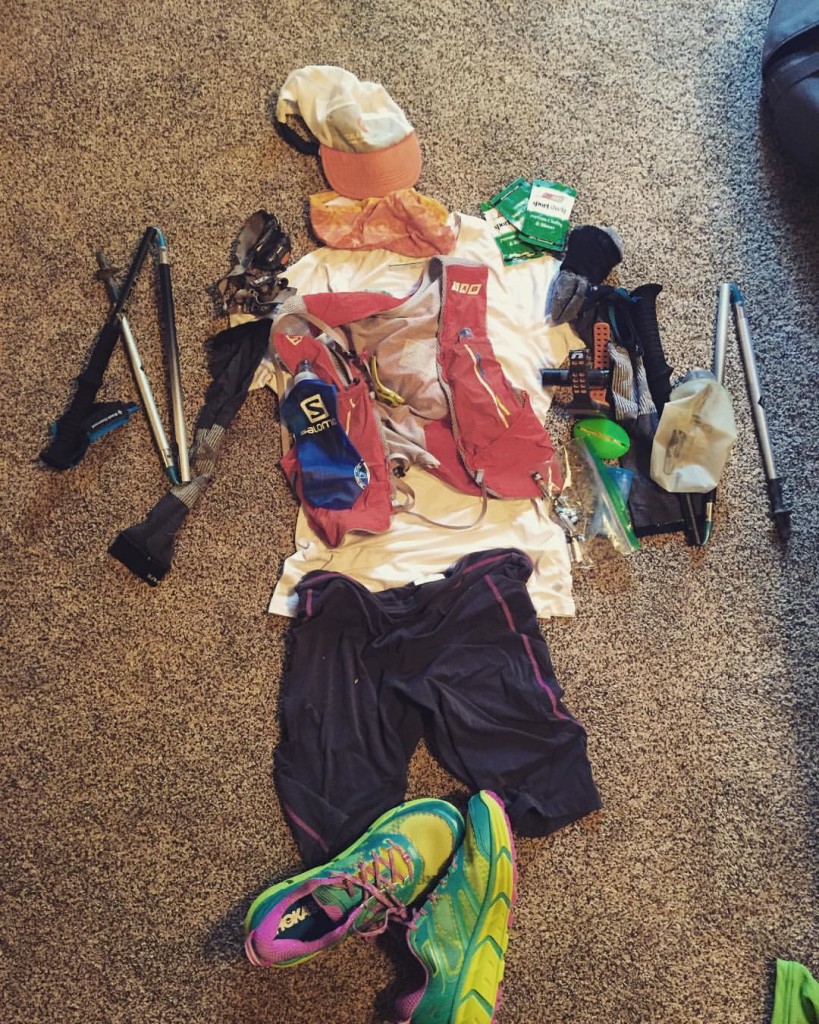 I ended up wearing a different shirt than pictured here, but other than that, this was my kit! Consumables
I ended up wearing a different shirt than pictured here, but other than that, this was my kit! Consumables
- First couple of miles I carried some applesauce and chewy granola bars. That got me to my first aid station.
- Emergency mentos – my go-to food for when I don’t feel like eating when my 30 min fueling timer goes off.
- At the aid stations the best food was: PB sandwiches, turkey and cheese sandwiches, popcorn and m&ms, Ramen with noodles, strawberry and banana smoothies, ginger candy, watermelon, cliff blocks, welsh’s fruit snacks.
- Hammer caps, S caps (from aid station), 2 doses of ibuprofen (strangely I needed early in the race, but then didn’t need to continue it?).
- One flask of perpectuem. Carried 2 ziplocks with perpecteum powder, used a partial one.
Wearables
- Hoka Challenger 2 (had a pair saved in a box that were new. Now I’ll have to figure out whether the 3’s are still a good fit).
- Marmot trail shorts (my old ones, all my other longer trail shorts were in the laundry. See how prepared I was?)
- WS100 crew shirt (cotton)
- Balegra Enduro socks
- Smartwool arm warmers (never used)
- Orange mud hat (freebie! And the BEST trail running hat I have).
- Solomon vest with 2 soft flasks plus extra 500 ml soft flask.
- Black Diamond z-poles
- Half buff (didn’t use)
- Emergency socks (didn’t use)
- Garmin something or other forerunner model
- Back up Timex watch with broken band
- Ziplock of extra batteries (no rattling!)
- Anti-chafe wipes
- Old battery petzel headlamp (didn’t use)
- Ibuprofen wrapped in a coffee filter in a change purse (no rattling!)
- Hammer caps in an empty mento’s gum container (minimal rattling…)
- Random sports bra from target
As usual if there are any questions, I’m more than happy to answer them. Ask me anything!


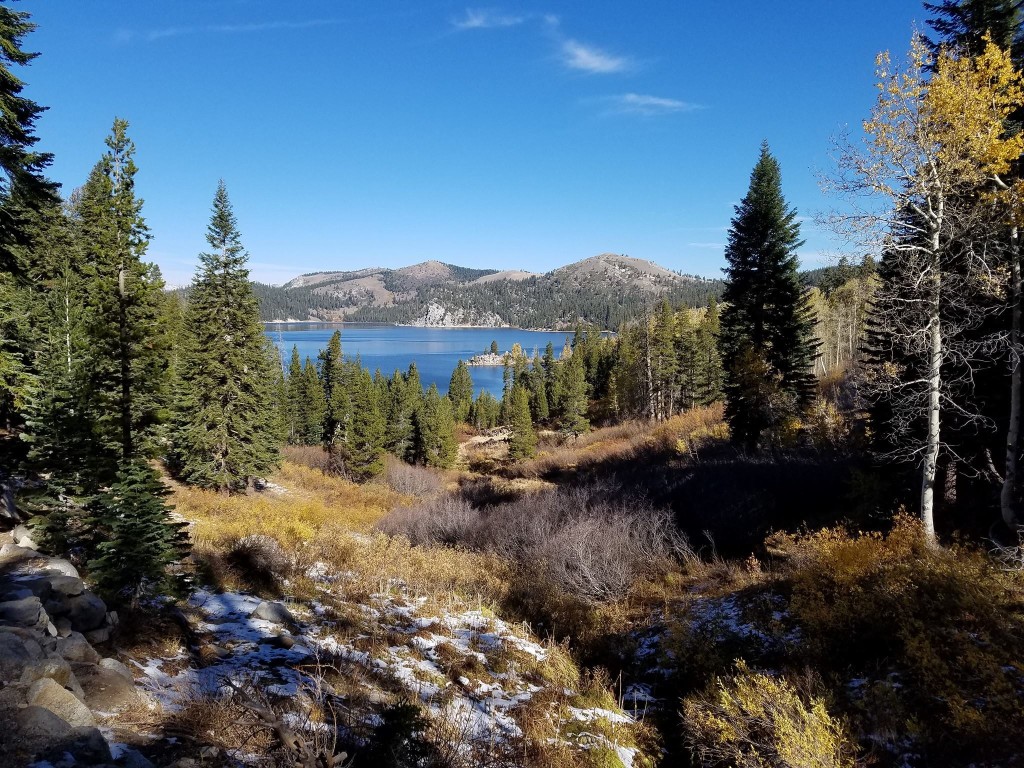
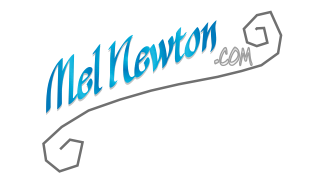










I look forward to your posts. So happy the race went well. I wish I was running with you but at 61 I think my time has past… Thanks for sharing the experience
What can I say? I’ve been following your endurance and your running, and you are Wonder Woman!!!!!! Way to go, many happy trails ahead for your two legs or on four.
Congrats! I followed the race feed, you moved up in placing towards the end, amazing accomplishment. Did there end up being a lot of snow?
No not really! Just enough to make it fun. Went down a couple of steep fields on my butt as make shifts slides and it was AWESOME. A huge boost afterwards to be silly late in the race.
Dude. You’re a f*cking BAMF.